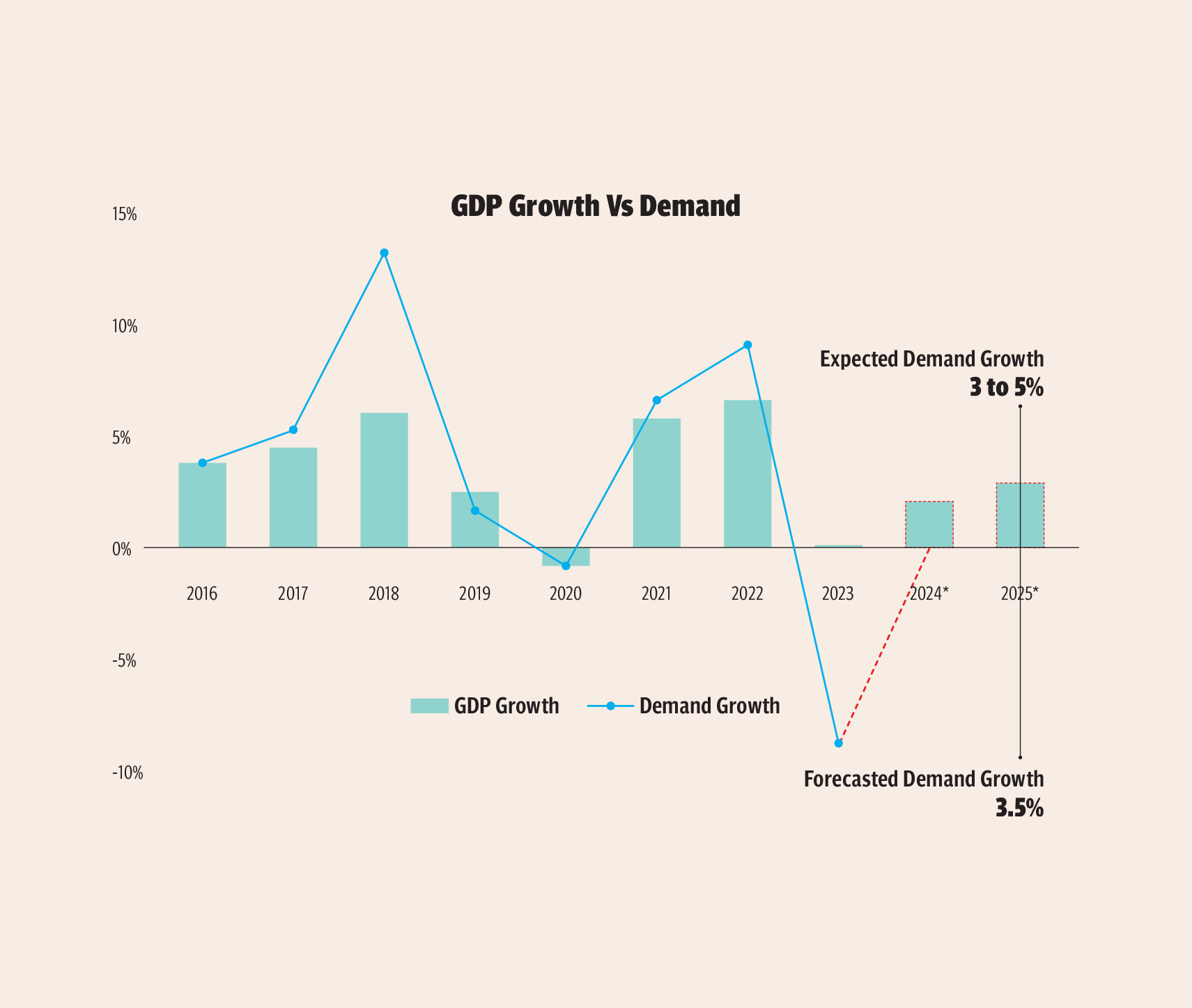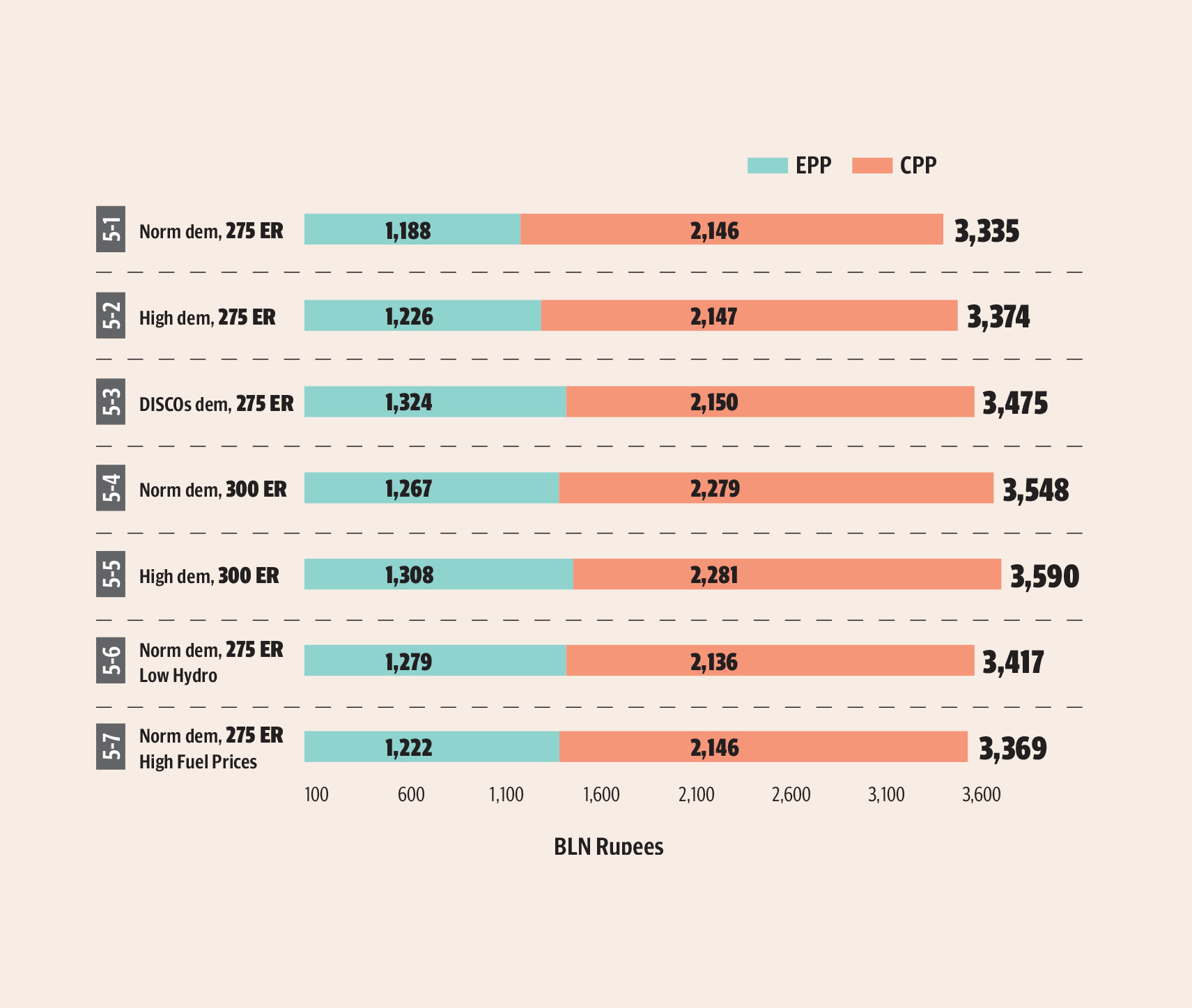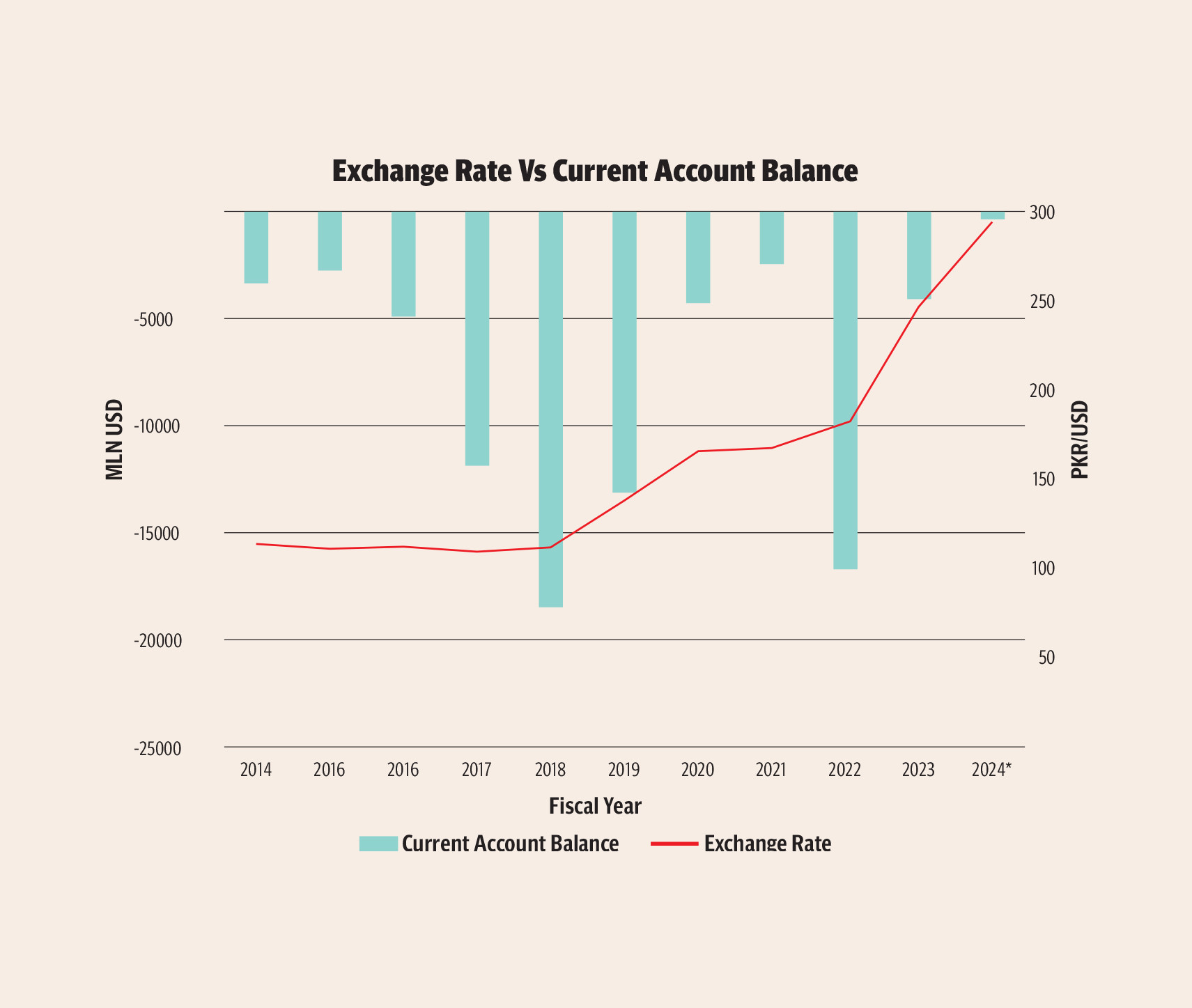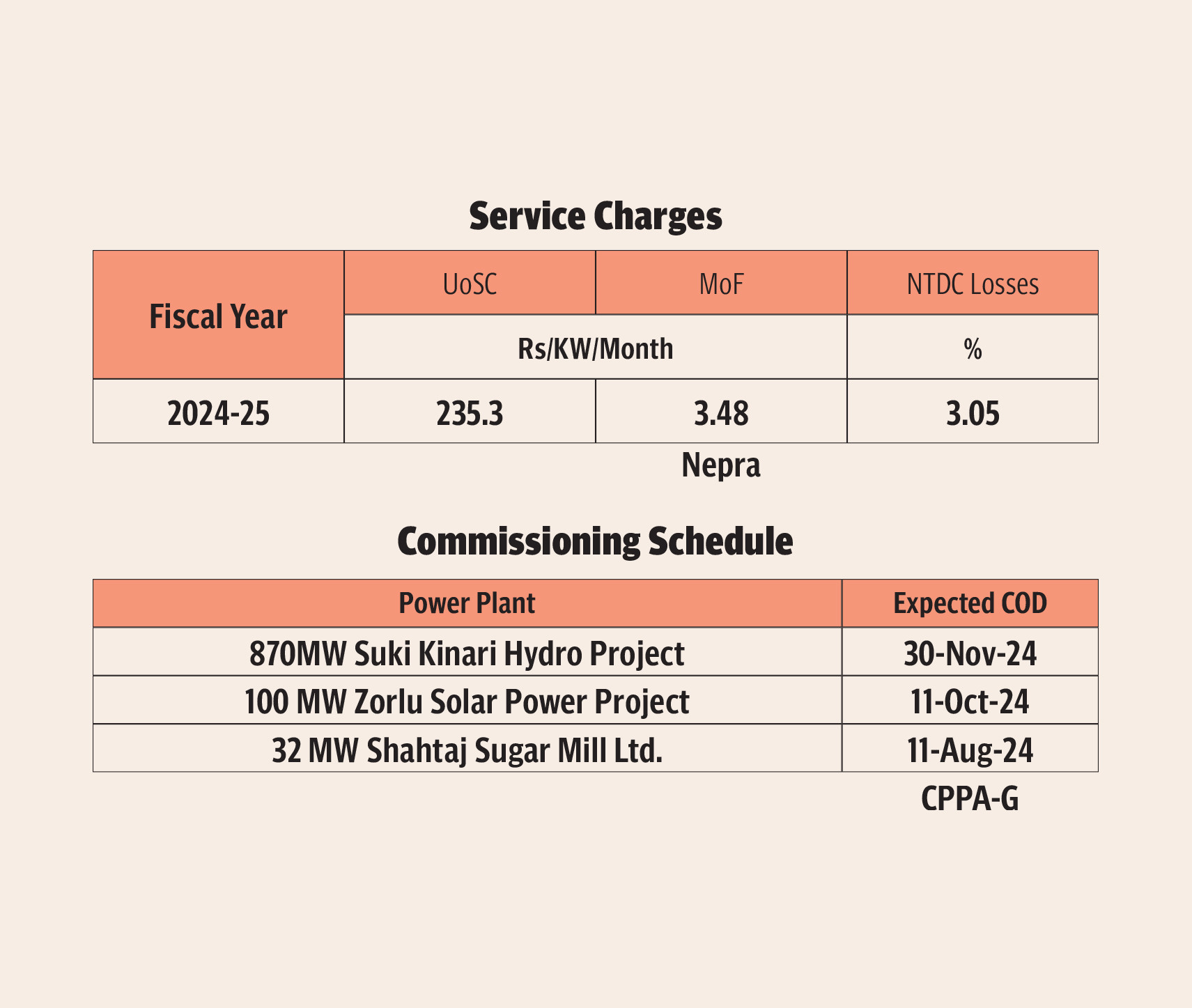Shaila Zain, a widow, lives in a small house just 60 sq yards in area, with two small rooms, a kitchen and a bathroom. She pays Rs20,000 in rent for the accommodation in New Karachi where she lives with her children. Three years ago when the family moved here, she also paid Rs800-Rs1,500 in electricity bills, varying from winters to summers. Since the past year, the electricity bill has shot up to Rs3,500-Rs6,000 depending on the season.
“We don’t even have a refrigerator, only two lights and one fan. Still I was unable to pay the bills due to the increase in charges,” said the 40-year-old. So she sold the gold earrings her mother had given her in order to run one fan to bear the sweltering Karachi summer and remain in the house with her three children.
“I sometimes feel like committing suicide but then I fear Allah and pray for myself,” said Shaila. “I don’t know how we manage to bring food to our table when we have to pay almost half of the income in electricity bills,” she lamented. Her children, the eldest being only 14, also work in factories. She still resorts to selling her jewelry and even household items routinely in order to pay the bills.
Sabir Ahmed, who has been working as an electrician for 30 years, has seen how frustrated people are with the always-soaring electricity prices. He has been getting calls from his customers to help them find solutions to lessen their electricity bills.
“A few days ago, a customer of mine from a middle-class family called me to ask if their load can be divided or if there was any way they could get charged less.” Ahmed told The Express Tribune. “I was stunned that he was actually looking for a trick to steal electricity. When I inquired, he told me that every month his bill runs up to 18,000 to 25,000 rupees despite not having an air conditioner,” Ahmed shared.
Although a normal middle-class household has a washing machine, microwave oven, juicer blender, iron, refrigerator and few more daily usage items that add up to high charges of electricity, the additional charges that electric companies slap on are horrifying. “I earn around 50,000 to 60,000 rupees a month, half of which goes in bills that too only electricity and gas. Even then we face six to nine hours of load shedding daily,” Ahmed said.

A dark age, literally
Pakistan is entering a dark age where basic amenities and utilities like electricity are not accessible to all citizens. As summer approaches, people have started feeling the heat of load shedding as usual. In fact, electricity has become a rare commodity for consumers, especially those living in remote areas of the country.
The energy sector is said to be the backbone of the country's economy, but the power sector in Pakistan has currently collapsed the economy, with electricity prices crossing Rs60 per unit. Such high rates have halted the wheels of the economy rather than pushing it forward. The electricity prices are so high that they are beyond affordability for consumers. The power distribution companies, it seems, prefer to provide electricity to the elite who pay the bills.
Till now solar net metering has been the immediate solution for those seeking emancipation from the government’s soul-crushing energy policies, but the energy ministry has launched a campaign to end this alternate solution to ensure the monopoly of power distribution companies. The problem has reached a level where there seems to be no remedy.
Former Managing Director of Pepco Tahir Basharat Cheema said that generation has become very expensive, beyond the affordability of consumers. He also cited NTDC transmission issues, incompetence, higher taxes and duties, low bill recovery, and staff shortages as other issues resulting in the poor performance of the power sector in Pakistan.
With consumers still suffering daily load-shedding even though the installed capacity of the country has reached its highest level of 43,000MW, the real issue seems to be one of bad governance. Politically motivated appointments of the heads of power sector companies and the boards of directors have crippled the entire energy sector. Such appointments result in bad governance in state-owned entities, causing high losses, power theft, and low recovery of electricity bills. Consequently, the circular debt continues to balloon due to these inefficiencies and leakages, now having reached 2.5 trillion rupees.
Paying for political appointments
Shakeel Durani, former chairman of Wapda, said that the board of directors of power companies should be abolished, as all appointments are politically motivated. He suggested restoring the regime of Area Electricity Boards to bring improvement in power sector firms. He noted that before 2007, when area electricity boards were operational, electricity losses were eight to 10 per cent. These losses started rising after introducing boards of directors with politically motivated appointments.
Durani proposed that the management control of power companies should be given to the private sector for 15 years rather than privatising the companies. The private sector should be required to increase bill recovery by 10 per cent each year.
The number of power sector consumers has increased from 500,000 in 1958 to 20.5 million. Durani argued that it is impossible for state-owned power distribution companies to manage such a huge volume of consumers.
This is why leakages in the power sector are rampant, with only about half the total electricity cost being recovered. He noted that technical losses and power theft account for 30-32 per cent, while low recovery of electricity bills accounts for 15-18 per cent of the electricity that disappears. As a result, 500-600 billion rupees are lost due to these losses and low bill recovery every year.
Transmission and distribution networks, plagued by losses of 25-30 per cent, present a bottleneck, translating to significant financial losses and hampering efficiency.
These issues have crippled the cycle of unpaid bills, financial constraints, and delayed investments, resulting in frequent power outages that disrupt daily life, hinder economic activity, and dampen investor confidence.
Incompetence promotes corruption, which is prevalent in power distribution companies (Discos). Politically motivated appointments of CEOs often result in these companies being run on an ad hoc basis, with boards taking executive control of Discos. Currently, most directors are close relatives of parliamentarians, more concerned with transfers, postings, and installing transformers than policy making. Discos also lack trained staff, facing a shortage of around 60,000 employees that require immediate appointments.
The policy is not pro-public and seems designed only to offload Discos, failing to cater to consumer needs. The subsequent weak governance also translates to power theft.

Increased capacity, bad governance
The government continues to install power plants without due diligence. Pakistan’s installed capacity surged to over 41,000MW in 2023 from 19,566MW in 2007-08. Despite this, consumers continue to face load-shedding due to poor governance and low investment in infrastructure.
The primary reasons for high electricity bills are dependence on imported fuels, notably furnace oil and LNG, which are the lifeblood of Pakistan's power generation. These fuels account for around 60 per cent of total electricity production, leaving the sector vulnerable to international market fluctuations in energy prices.
Where the power policy went wrong
After independence, the Water and Power Development Authority (Wapda) was created in 1948 to develop water and power infrastructure in the newly born state of Pakistan. Before independence (1947), there were small hydel and thermal power plants.
The Pakistani government focused on large hydropower projects like the Warsak and Mangla dams in the 1950s-60s to boost electricity generation capacity and increase water storage in the country. Nationalisation started in 1974 during the Bhutto regime, bringing all generation, transmission, and distribution companies under the umbrella of Wapda.
Wapda began to devolve in 1998 under power sector reforms. Other companies like the National Transmission and Dispatch Company (NTDC) for transmission, Power Generation Companies (Gencos) for generation, and Distribution Companies (Discos) for distribution in different regions were set up.
Since then, several key factors have added to the miseries of consumers and even governments in Pakistan. The major factors include the setting up of Independent Power Plants (IPPs) by different governments. These IPPs were offered higher rates of return and uncapped dollar indexation. Subsequently, policies were introduced to run these plants on oil, linking with capacity payments.
The Power Policy of 1994, formulated during the Pakistan Peoples Party (PPP) regime, was the first to set up IPPs. Fifteen IPPs were set up under the policy. These IPPs were controversial, and cases were registered against the leaders of the then government. While these IPPs boosted installed capacity, power tariffs also went up due to higher costs as these plants were fuel-based.
Four years later, the Power Policy of 1998 marked a significant departure from previous policies by halting the liberal approach and initiating new trends in the power sector. It introduced competitive tariffs and focused on using indigenous resources to reduce reliance on costly imported Residual Furnace Oil (RFO), a practice from the 1994 Energy Policy.
However, the policy planners did not anticipate the negative impact of bureaucratic red tape, which undermined the efficiency of the supposed one-window operation for managing IPPs.
During the regime of Pervez Musharraf, the 2002 power policy was introduced to address high electricity tariffs and promote renewable energy. Fuel price indexing was introduced to reduce tariff uncertainty for IPPs.
When the PML-N returned to power, it introduced the 2015 power policy, especially aimed at attracting investment for IPPs under the China-Pakistan Economic Corridor (CPEC). Several projects, including coal-based ones, were set up under CPEC with high return rates of up to 30 per cent.
The government of PTI revised tariffs for the IPPs under all policies except 2015 as it was not easy to strike revised deals with IPPs set up under CPEC.
These different power policies led to a flood of thermal power plants while ignoring renewable and hydropower projects. As a result, the country's power plants initially depended on oil and now depend on imported gas and coal. The exploitation of Thar coal led to the setting up of power plants, but the transmission system is insufficient to transport electricity.

Why consumers suffer
Though Pakistan has achieved the highest installed capacity of around 41,557 MW, a significant jump from just over 19,500 MW a decade ago, thanks to CPEC projects, the country still faces load-shedding woes. The highest installed capacity has added another burden of higher electricity bills due to capacity payments.
Most power plants remain shut which becomes a blessing in disguise for plant owners who receive multibillion rupees in capacity payments. The government expects power consumers to pay over Rs2 trillion to these shut down power plants during the current financial year.
As the Federal Board of Revenue (FBR) has failed to expand the tax net base, it also finds it easy to collect taxes from electricity consumers. Discos also charge taxes that go to provinces. Consumers pay 40 to 50 per cent in taxes on electricity bills, including 18 per cent GST, electricity duty, income tax, advance income tax, and further tax. Additionally, they pay a PTV fee, and there are reports that Radio Pakistan is calling for collecting 10 rupees from electricity consumers to subsidise it.
The lack of governmental authority has led to rising power theft and low bill recovery.
Unsustainable energy mix
Pakistan's power sector remains heavily reliant on dwindling reserves of non-renewable resources, primarily fossil fuels like coal, furnace oil, and natural gas. This dependence comes at a steep cost, not just for the nation's finances but also for its environment and long-term sustainability.
Earlier, Pakistan depended on oil imports for power plants. Now the focus has shifted to LNG imports, a key factor in the surge of circular debt. The volatility in LNG prices in the international market has impacted the power sector in the country. In recent years, Pakistan has struggled to secure LNG deals due to price volatility, making the power sector vulnerable.
Burning fossil fuels in the power sector poses a serious climate change challenge. Fossil fuel combustion releases greenhouse gases like carbon dioxide, a major contributor to climate change. Pakistan's dependence on these fuels exacerbates its vulnerability to climate change impacts, including extreme weather events, rising sea levels, and glacial melt.
The International Renewable Energy Agency (IRENA) reports that Pakistan could save one billion dollars annually by switching to renewable energy sources like wind and solar.
As of 2023, renewable energy sources contribute a mere seven per cent to the energy mix, with hydro, solar, and wind contributing 3.5 per cent, 2.5 per cent, and one per cent, respectively. Power generation through thermal still accounts around 60 per cent.

Solar for those who can afford it
Large numbers of residents who can afford it have installed solar panel systems for their homes. Salman Siddiqui plans to shift his household to solar energy by July. “Just because in last three to four years we have read many reports on climate change, seasonal changes and global warming, we thought to get solar installed so that we don’t have to worry about electricity bills and can use ACs for longer hours instead of worrying about meter and units,” he told The Express Tribune. No matter how much you earn or budget, the eve-increasing tariffs are a headache. “It just doesn’t stop,” he said. “When we budget our monthly expenses with 25,000 rupees in electricity bill, the bill comes to 35,000 rupees and when we cut off other expenses to adjust 35,000 rupees for the next month, it goes up to 50,000 rupees. The loop is never ending because people have no choice other than buying from K-electric as it has a monopoly in the city. That is why people will keep suffering until they step up and protest like the people in Jammu and Kashmir did,” said Siddiqui, who works for a multinational company.
Unbundling the power sector
Since 1994, Pakistan has been working to unbundle the power sector to promote competition and attract private investment. However, progress has been slow.
The establishment of the National Electric Power Regulatory Authority (Nepra) in 1997 was a key step. Nepra aimed to improve governance and attract private investment by setting tariffs and enforcing standards for service delivery. Despite these efforts, governance issues continue to plague the sector. Nepra has failed to keep electricity prices in check for consumers. Rather it has been endorsing all the plans of the government that back inefficient power companies while ignoring the consumers.
The government should unbundle the power distribution companies (Discos) that are the major cause of all illness in power sector. The Discos should be split into small power distribution companies to bring efficiency and improvement.
Former Energy Member Planning Comission Shahid Sattar said, “Unlike non-traded firms that receive heavy protection through import duties and other restrictions – and therefore have the ability to pass on the impact of higher energy costs to consumers – export-oriented firms must compete in international markets where competition is fierce and on price.”
“These firms cannot pass on the impact of higher energy prices because consumers can simply substitute their products with those of competing firms in regional economies with lower energy costs and lower prices,” he explained
“For traded sectors like textiles and apparel, on which the entire economy depends to generate foreign exchange earnings — the shortage of which is the fundamental issue behind every economic crisis Pakistan has faced — cross subsidies in power tariffs take the form of a tax that cannot be exported,” Sattar added.

Urgent reforms needed
The need for reforms in the power sector is urgent. This includes addressing politically motivated appointments, ensuring professional management, reducing technical losses, improving bill recovery, and promoting renewable energy. Implementing these measures can steer the sector toward sustainability and efficiency, benefiting consumers and the economy.
Despite having the highest installed capacity, the power sector continues to be plagued by load shedding due to governance and financial issues. The government must address these challenges to provide affordable and reliable electricity to the people.
